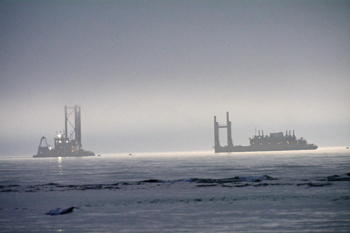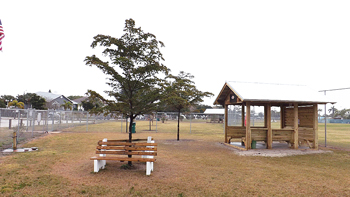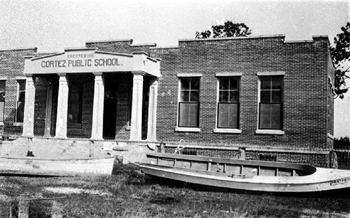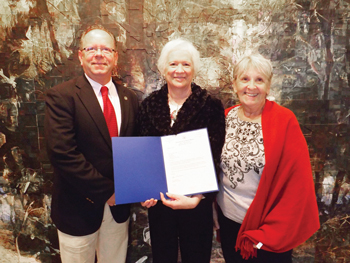
The dredge California, above right, emerges briefly from the
fog off Anna Maria Island Saturday evening and is
accompanied by another vessel that supplies power
for the renourishment operation.
BOB PATTON | SUBMITTED
BRADENTON BEACH – Are you trying to make plans to dodge the beach renourishment project on Anna Maria Island?
The U.S. Army Corps of Engineers makes no guarantees, due to possible bad weather and equipment problems, but here’s its latest estimate of when and where it will be working this month.
• Feb. 5, 28th Street, Holmes Beach;
• Feb. 12, 23rd Street North, Bradenton Beach;
• Feb. 19, 11th Street North, Bradenton Beach;
• Feb. 26, Cortez Road, Bradenton Beach.
When the project reaches Fifth Street South, where the paved walkway begins on Coquina Beach, the dredge will be temporarily relocated to the Mississippi River due to an urgent need there, according to Bradenton Beach Mayor Bill Shearon.
As a result, the Coquina Beach renourishment, which was scheduled to continue with funding from different sources when the project reached the public beach, may be delayed until July, he said.
During any delay, however, the dredging company, Great Lakes Dock and Dredge, will not be allowed to leave any pipe on the beach, according to Coastal Planning and Engineering spokeswoman Michelle Pfeiffer.
“If they pursue the project on the river, they will be required by contract to stage the pipe and other equipment appropriately,” Pfeiffer said. “Everything will be stored properly; there won’t be a disaster for tourists to avoid.”
During an earlier renourishment paid for by the Army Corps of Engineers, the contractor, which is now out of business, left pipe on large sections of beach, essentially blocking off access to the Gulf of Mexico. The company the corps hired used equipment that was too small for the task and the corps finally stopped the project without finishing it, to get the pipes off the beach.
Meanwhile, a Manatee County Commission hearing on the Coquina Beach project, which will end at Longboat Pass, was postponed last week until Tuesday, Feb. 11, at 9 a.m. at the commission chambers in downtown Bradenton.
Late last week, the project was at 30th Street, moving south from Holmes Beach, where the project began on Dec. 20.
Operations are 24 hours a day, seven days a week. Due to safety concerns, some beach and beach access areas will be closed or restricted during construction. Beachgoers are asked to use caution due to the extensive construction activities until work is completed. Posted signs provide safety guidance.




